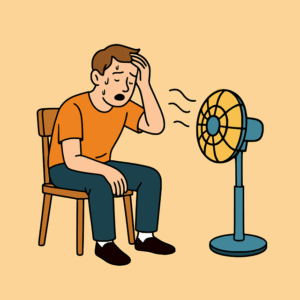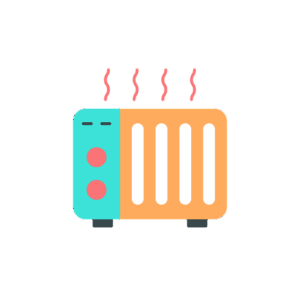Commercial Destratification Fans: Revolutionize Gym Air Quality

Commercial destratification fans are transforming air quality management in high-traffic areas like…….
In the pursuit of healthier and more productive environments, commercial destratification fans have emerged as a powerful tool in the global effort to improve air quality. These specialized ventilators play a pivotal role in various industries by facilitating efficient air circulation, temperature regulation, and the removal of pollutants, ensuring optimal indoor environments. This article aims to provide an in-depth exploration of commercial destratification fans, their impact, and their evolving role in shaping sustainable practices worldwide.
Commercial destratification fans, often referred to as high-volume, low-speed (HVL) ventilators, are designed to move large volumes of air at lower speeds compared to traditional fans. This unique approach to ventilation offers several advantages, particularly in large commercial spaces such as offices, warehouses, and industrial facilities.
Core Components:
Historical Context:
The concept of destratification fans traces back to the late 20th century when researchers sought solutions to address issues related to vertical temperature stratification in large buildings. As cities grew, so did the need for more energy-efficient and environmentally friendly ventilation systems. Over time, technological advancements led to the development of HVL fans, which revolutionized air quality management by providing a quiet, cost-effective alternative to traditional ventilation methods.
The influence of commercial destratification fans extends far beyond local markets, with significant global adoption and diverse regional applications.
| Region | Key Trends | Impact |
|---|---|---|
| North America | Increasing focus on energy efficiency and sustainable practices drives the demand for destratification fans, particularly in commercial and industrial sectors. | Reduced energy consumption and carbon footprint, leading to cost savings and environmental benefits. |
| Europe | Stricter indoor air quality (IAQ) regulations prompt businesses to invest in advanced ventilation systems, making destratification fans a popular choice. | Improved public health and productivity through enhanced IAQ. |
| Asia-Pacific | Rapid urbanization and growing e-commerce industry fuel the need for climate-controlled warehouses, boosting demand for destratification fans. | Efficient temperature management and improved working conditions in logistics and manufacturing hubs. |
| Middle East & Africa | Focus on sustainable building practices and government initiatives drive adoption in commercial buildings and data centers. | Energy savings and reduced environmental impact in hot climates. |
These global trends highlight the versatility and effectiveness of commercial destratification fans across diverse industries and environments.
The market for commercial destratification fans exhibits dynamic characteristics, driven by a combination of technological advancements, regulatory changes, and shifting consumer preferences.
Continuous technological innovations have played a pivotal role in enhancing the capabilities of commercial destratification fans, making them more efficient, intelligent, and adaptable to diverse applications.
Governments worldwide have recognized the importance of commercial destratification fans in promoting sustainable practices and improving public health. Several key policies and regulations influence the development and deployment of these ventilators.
Despite their numerous advantages, commercial destratification fans face certain challenges and criticisms that require careful consideration and strategic solutions.
Case Study 1: Green Office Revolution – Silicon Valley, USA
A major tech company in Silicon Valley sought to enhance its office environment while reducing energy consumption. They implemented a destratification fan system throughout their sprawling campus, resulting in significant improvements. The fans effectively distributed cool air during hot summers and warm air in colder months, eliminating cold spots and hot zones. This led to a 20% reduction in energy costs for climate control, surpassing their initial expectations.
Case Study 2: Warehouse Optimization – Shanghai, China
A leading e-commerce logistics center in Shanghai struggled with maintaining optimal temperatures and air quality in its vast warehouse. By installing destratification fans, they achieved a balanced temperature distribution, improving working conditions for employees and reducing energy usage by 15%. The fans’ quiet operation also contributed to a more peaceful work environment.
Case Study 3: Sustainable Data Center – Stockholm, Sweden
A Swedish data center aimed to achieve carbon neutrality and reduce operational costs. They invested in destratification fans, which provided efficient air circulation while minimizing energy consumption. This strategy, coupled with smart cooling technologies, enabled the data center to reduce its carbon footprint significantly and earn industry recognition for sustainability.
The future of commercial destratification fans looks promising, with several emerging trends shaping their development and adoption.
Commercial destratification fans have emerged as a vital component in the global pursuit of efficient air quality management, energy conservation, and sustainable development. Their ability to provide customized ventilation solutions while reducing operational costs and environmental impact makes them an indispensable tool for modern businesses. As technological innovations continue to shape this industry, destratification fans will play an increasingly crucial role in creating healthier, more productive indoor environments worldwide.
Q: How do commercial destratification fans differ from traditional ventilation systems?
A: Destratification fans operate at lower speeds with higher air volumes, ensuring efficient air circulation without excessive noise. Traditional systems often rely on high-speed blowers, which can be noisy and less energy-efficient for large spaces.
Q: Are destratification fans suitable for all types of commercial spaces?
A: Absolutely! These fans are versatile and can be tailored to various settings, from offices and schools to warehouses and data centers. Their customizable designs and controls allow for optimal performance in different environments.
Q: How do I choose the right destratification fan for my facility?
A: Selection depends on several factors, including space requirements, desired air circulation rates, temperature control needs, and budget. Consulting with experts and considering local climate conditions will help ensure an appropriate choice.
Q: Can destratification fans improve indoor air quality (IAQ) significantly?
A: Yes, they are highly effective in improving IAQ by removing pollutants, maintaining optimal temperatures, and enhancing overall air circulation. This leads to better health and productivity for occupants.
Q: Are there any environmental benefits associated with using destratification fans?
A: Definitely! By reducing energy consumption and the reliance on fossil fuels for climate control, destratification fans contribute to lower carbon emissions and a smaller environmental footprint.

Commercial destratification fans are transforming air quality management in high-traffic areas like…….

Commercial destratification fans optimize ventilation in modern commercial spaces, breaking up air s…….

Commercial destratification fans optimize air circulation in high-ceiling spaces, improving HVAC eff…….

Commercial destratification fans are advanced ventilation solutions that enhance air circulation and…….

Commercial destratification fans optimize air circulation and temperature control in commercial spac…….

Commercial destratification fans optimize air circulation and temperature regulation in multi-level…….

Commercial destratification fans, engineered for high-volume air movement and efficient heat dissipa…….

Commercial destratification fans optimize temperature control in diverse spaces with varying ceiling…….

Commercial destratification fans optimize temperature control in large spaces, reducing heating cost…….

Commercial destratification fans are crucial for optimizing airflow and temperature control in large…….